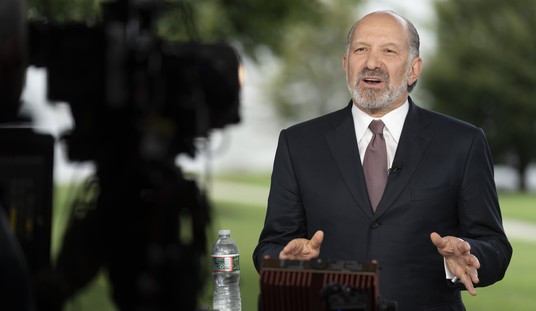The number of men who terrorized Mumbai was surprisingly small. Reuters reports that there may have been as few as ten gunmen, though I personally believe that the number was much larger when their support cells are taken into account.
Indian officials have said most, perhaps all, of the 10 attackers who held Mumbai hostage with frenzied attacks using assault rifles and grenades came from Pakistan, a Muslim nation carved out of Hindu-majority India in 1947.
Sebastian D’Souza describes how the gunmen walked through the Mumbai train station platform like a pack of raptors through a kindergarten outing. The photographer stalked the gunmen, dodging among the train carriages photographing them covertly and watched, horrified, as the “teenage gunmen” dealt out death like lollipops.
Sebastian D’Souza hears the gunfire at Chhatrapati Shivaji Terminus from his office across the street at the Mumbai Mirror tabloid. He follows the sound through the sprawling station, slipping unseen through parked trains. When he first catches sight of the young men, he doesn’t realize they are the gunmen. They look so innocent. Then he sees them shooting. “They were firing from their hips. Very professional. Very cool,” says D’Souza, the newspaper’s photo editor. For more than 45 minutes he follows as they move from platform to platform shooting and throwing grenades. Often, D’Souza isn’t even 30 feet away. The few police at the station are either dead, in hiding or had long fled.
The routine machinery of the great city fed more victims into the maw. Trains filled with new passengers disgorged yet more victims into the line of fire. Later D’Souza would reflect upon the blind panic which paralyzed the beat cops. Perhaps we shouldnt be too hard on these Mumbai flatfeet. They had probably never encountered something that shot back with an automatic weapon. In its own way the Mumbai event underlines what the NRA has been saying for years. Guns don’t shoot themselves. People are needed to pull the trigger. Without anyone willing to open fire, the police pistols which stayed in their owner’s holsters might as well have been bouquets of flowers.
But what angered Mr D’Souza almost as much were the masses of armed police hiding in the area who simply refused to shoot back. “There were armed policemen hiding all around the station but none of them did anything,” he said. “At one point, I ran up to them and told them to use their weapons. I said, ‘Shoot them, they’re sitting ducks!’ but they just didn’t shoot back. … ‘I told some policemen the gunmen had moved towards the rear of the station but they refused to follow them. What is the point if having policemen with guns if they refuse to use them? I only wish I had a gun rather than a camera.'”
Most people will naturally flee from danger. Only time, training and conditioning — a form of brainwashing — can reliably forge bodies of men who will instinctively do the unnatural. Re-read the embedded journalist’s accounts of events in Iraq and note the descriptions of soldiers or Marines who deliberately move toward the sound of firing or as it was more quaintly put in the old days, “to march to the sound of the guns”. During the First World War thousands of men would rise out the trenches to walk into machine-gun fire. The ordinary crowd at a shopping mall simply can’t be expected to do that. Maybe the most important effect of the Second Amendment is that it it implants the germ of the idea that resistance is a viable option. It’s a germ which must be nurtured by a little training. The gun is an easy thing to find. It’s is the making of a shooter which is harder.
When whole populations come under siege, as is the case in Israel, the unnatural instinct to resist eventually becomes part of the culture. The instinct to fire back supervenes over the natural inclination to flee. My guess is that the transformation will come more easily to the Third World than to civilized Western societies. The only time I saw a civilian crowd run towards gunfire was in the vast Tondo Foreshore slum, an unimaginably squalid place where life was cheap. Some bankrobbers had fled into the slums and were pursued by cops with automatic weapons. I can never forget how the kids climbed poles to get a better view of the action and a play-by-play was passed back among the onlookers. But then this was a population used to gang violence and hard living. Among the better class of people, the transformation takes a little longer. In Mumbai, once over the initial shock, the hotel staff at the Taj Mahal and the Oberoi manfully helped the guests to escape and evade, some losing their lives or coming to hurt in the process.
Prashant Mangeshikar, a guest, said that a hotel worker, identified only as Mr Rajan, had put himself between one of the gunmen and Mr Mangeshikar, his wife and two daughters.
“The man in front of my wife shielded us,” Mr Mangeshikar said. “He was a maintenance section staff member. He took the bullets.” For the next 12 hours, before Mr Rajan was finally taken out of the hotel, guests battled to stop the bleeding from a gaping bullet wound in his abdomen. It is not known if he lived.
Eventually the worm turns. But in the golden hour of the first shock, in Mumbai as over American skies on 9/11, evil will have its own way. One day, when Mr Rajan enters his Valhalla, his first act may be tell Todd Beamer what “let’s roll!” is in Hindi.










Join the conversation as a VIP Member